This is a great short walk (3.5 miles) if you feel the need to escape the hustle and bustle of the city but don’t have a whole day to get lost in the wilderness. Although only covering a small section of the River Thames, the walk does include some fascinating WW2 history, vast open space in the form of marshland and working industry, so four boxes ticked: river, open space, history and industry.
The walk began at Rainham train station, only three stops from West Ham on the C2C overground train so easy access from the city. It was a sunny, windy day in February 2020. From Rainham Station, I crossed over the the railway footbridge, this provided great views both east and west, then along an elevated walkway which was held up by an intriguing array of timber poles, angled to look like walking legs.
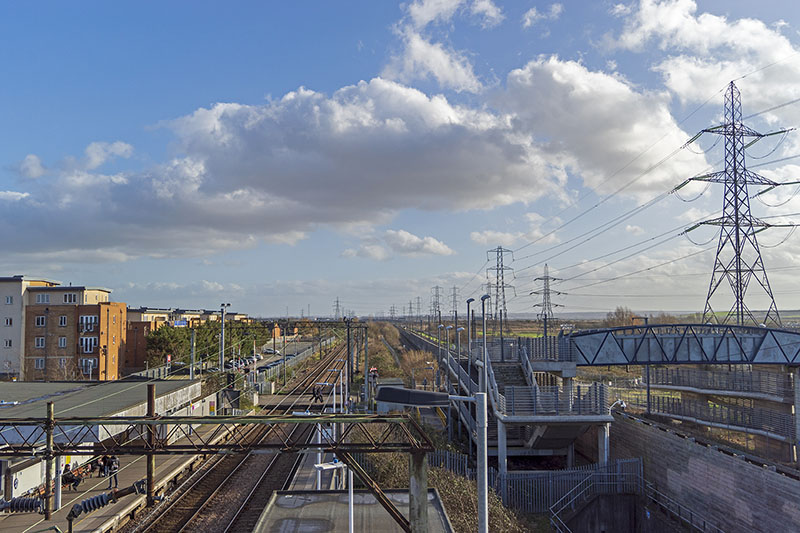
The route ran parallel with Ferry Lane, an industrial estate on my right and fields of pylons and tall grass on my left.
A few minutes along this ‘in-between’ land brought me to the A13 dual carriageway. This road had become my personal boundary line between populated and desolate space. Walking underneath the A13, I was again impressed by pillars, this time more than I could count. Standing straight and made of concrete (compared to the wooden angled pillars from the footbridge) there was something mysterious about their patterns and symmetry. I spent a couple of minutes trying to capture the perfect shot of the bridge supports. A couple of walkers stopped and chatted. They were also intrigued by the pillars, I am glad I was not the only one.
Exiting the underpass back into daylight, on the other side of the A13 was Ferry Lane South, leading to more industrial units. But I was now about to enter Rainham Marshes Local Nature Reserve.
This was a walk through ancient low-lying marsh land, which was a rich hunting ground in pre-historic times. An information sign referenced the fleeces of sheep turning black from soot, in the days of heavy industry. The area was also used as a military firing range prior to 2000. The RSPB now work to develop the land which supports a variety of birds and other wildlife.
Upon reaching the middle of the marshes I could almost pretend I was in the countryside. Far enough from the A13 not to hear traffic, a hill ahead obscured the Thames and industries, empty fields to one side and unkempt tall grass the other. The sense of remoteness was enhanced by the sound of trickling water from a series of waterways which carved up the land.
The path eventually brought me out at Coldharbour Lane, not to be confused with the road of the same name in Brixton. Ahead was a military style checkpoint and ‘No Pedestrian Entry’ / ‘Private Road’ sign, so I turned right, down a single lane side road which would lead me to the River Thames.
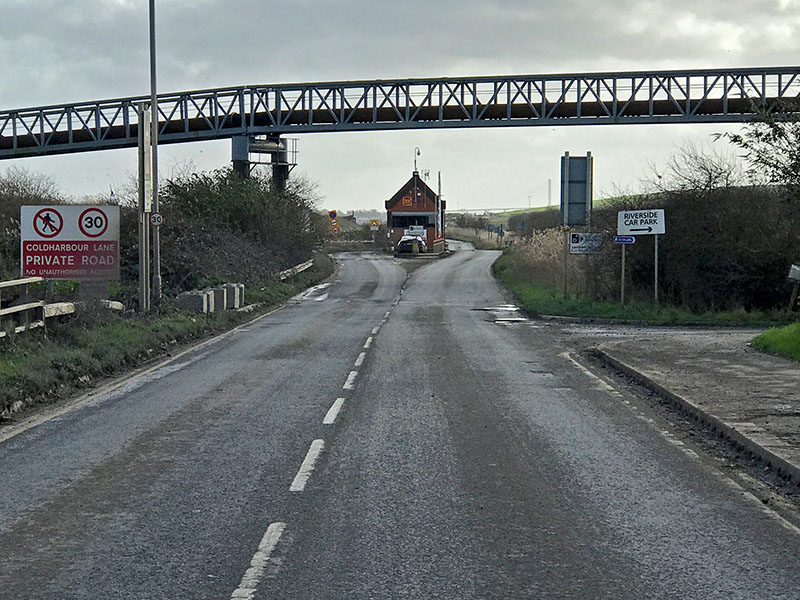
As I walked up the final incline, at last I could see the river. A bleak, rugged, industrial landscape lay across the water at Erith: an outline of industrial buildings, chimneys and two ominous concrete silos made up the skyline. A ship was being loaded with aggregate in dock. To my right was the Tilda Rice mill and loading pier.
The most intriguing sight lay on the foreshore directly in front: a disarray of abandoned WW2 concrete barges (or lighters). With their hulls made up of concrete reinforced with steel (due to wartime metal shortages) but still light enough to float, the barges were used to transport fuel, water and munitions as well as forming Mulberry harbours and floating pontoons during WW2. Up to five hundred barges were made and they formed a key part of the support during the D-Day Normandy landings of June 1944. Now left abandoned on the banks of the River Thames, these once vital military barges now supported the grazing and breeding of bird wildlife.
From this point, the most popular and obvious walking route is to head east along the riverside path which curves around Coldharbour point lighthouse, then loops back inland to the barges carpark, or you can carry on eastward towards Rainham Marshes Nature Reserve.
However I wanted to head west upstream towards London. On a previous walk (Barking to Dagenham) I had to head inland when I could walk no further along the river due to industry at Dagenham Dock. I wanted to see if the walk was possible the other way, and if so, how far I could get along. I turned right along the concrete path, passing the Tilbury Rice processing plant. Prior to Tilbury Rice the site was the home of Murex (est. 1917) who specialised in extracting and processing rare metals shipped here from all over the world. The flames from the furnace used to light up the night sky (according to the sign).
After the mill and jetty the path turned a corner, cutting me off from the walkers at the car park. I definitely felt as if I was entering ‘no mans land’. The strong wind howled through a row of 9 large grain silos. Unlike the path in other direction, here it was overgrown. I had to climb through bushes to access the Thames wall. I carried on along the sea wall. Peering over, I could see the shore was made up of large rocks, timber, rope and bottles (glass and plastic).
Further along, I was shocked to see both a makeshift concrete bench and a plaque on the inside of the sea wall: commemorating the 800th anniversary of the founding of the ferry between Rainham and Erith in 1199AD. Obscured and off the beaten track, I wondered if this was once a busy area. Apparently the ‘Three Crowns’ pub used to be here, but I could see no evidence of it.
As I reached the end of this section of river wall, a security fence over the wall and recycling centre blocked the route ahead. I could see industrial works along the shoreline towards Dagenham Dock, the old Ford factory and a ship in dock. I could see no ladders down to the rocky beach, if I did make the two meter jump the route looked treacherous and the tide would eventually come in. I had made my excuses, again I had been beaten by my need to be sensible. I headed inland, walking up Ferry Lane towards Rainham to complete the loop.

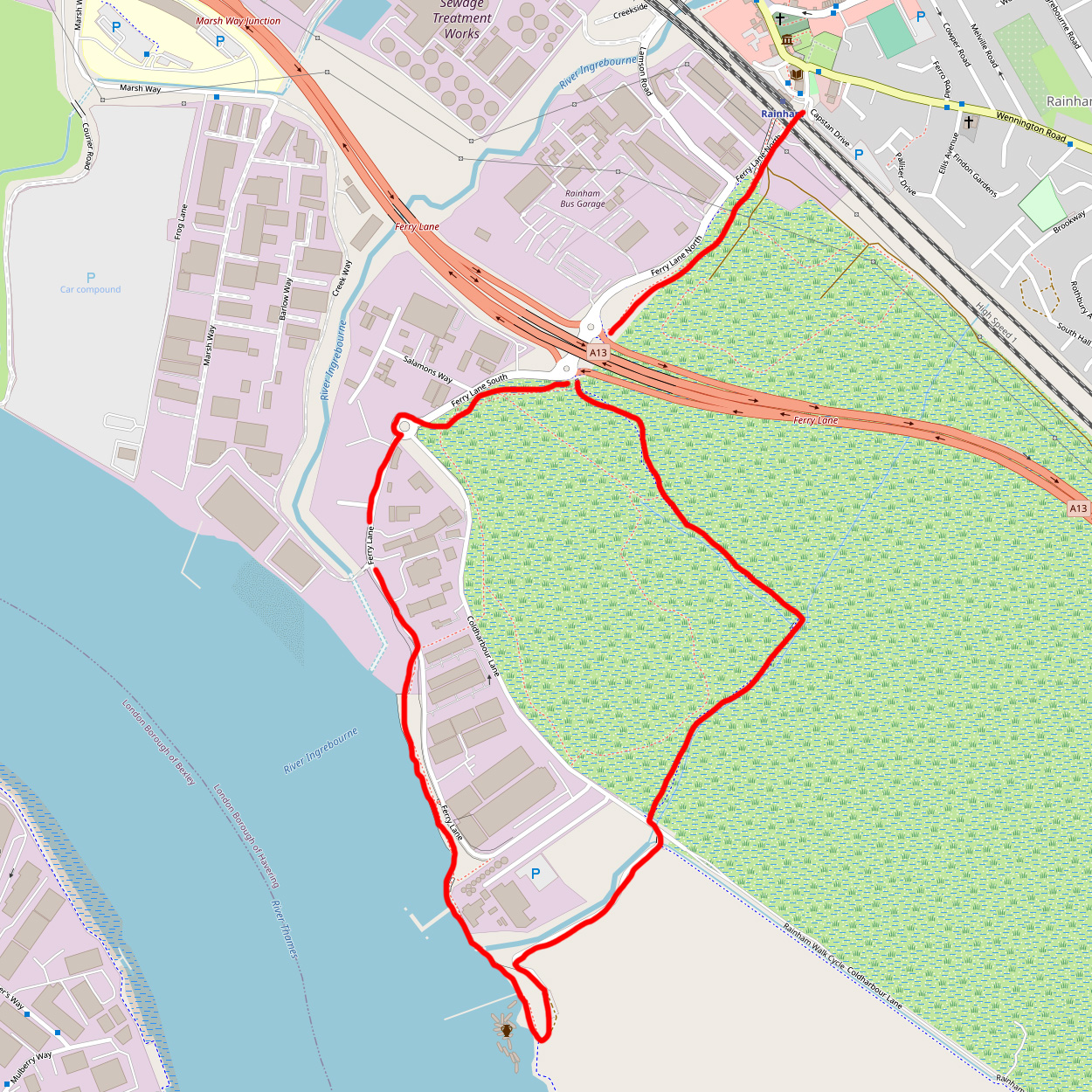
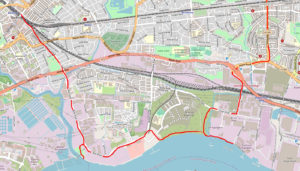
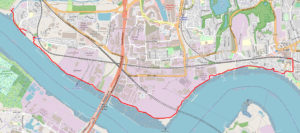
What a terrific blog. I know this area really quite well but the text and the very evocative photos enriched it greatly.
thanks, much appreciated. I have done many walks since, your encouragement has inspired me to write them up.
Thank you for the information it was very interesting especially as we walked that way today. Was very interested to learn about the concert barges.
no prob’s, thanks for your feedback. It’s a great walk, will need to revisit soon.
Unfortunately your write up on the barges at Rainham Marshes is perpetuating an urban myth. They are not lighters, they were built as Petrol Barges (a lighter would be open, used for lighterage). They have absolutely nothing to do with Mulberry, they didn’t go to Normandy
Thanks for the info’. I shall have to re-write this section as I don’t want to spread misinformation. There’s enough of that already. The information I wrote was based on research i.e. other articles I read but if they are wrong also then the lie is perpetuated.